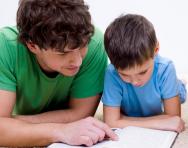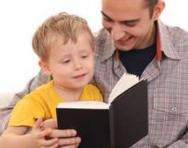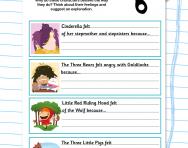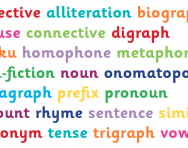What is guided reading?
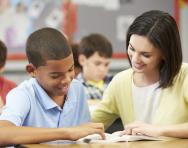
What is guided reading?
Teachers will designate half an hour in their timetable a day to a reading session for their class. They will work with a small number of children to analyse a text in detail, making sure each child can read each word and discussing meaning of the text with them.
Teachers try to make sure that this group guided reading session is done every day so that at the end of each week, each child has had some quality reading time with a teacher. Sometimes a teacher will recognise that certain children need extra reading support and may arrange for them to read with a teaching assistant or another more able reader in the class.
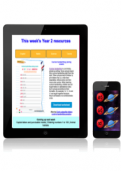
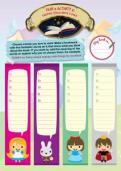
Boost Your Child's Learning Today!
- Start your child on a tailored learning programme
- Get weekly English & maths resources sent direct to your inbox
- Keep your child's learning on track
How do guided reading sessions work?
Usually, teachers will set up a 'carousel' of activities. This means that there will be an activity laid out on each table and the children will move round to a different table each day, for example:
- Reading topic books
For example: the class may be learning about Ancient Eygpt, so there may be a pile of books here on that subject.
- Grammar activity
Children may be given a set of worksheets to work on a grammar activity appropriate to their level.
- Guided Reading with the teacher / Choosing Books
Children here may be sat near the book corner to be given the opportunity to choose a book to take home.
- Writing Table
Children may be given a selection of coloured paper, pens, cards etc. and asked to write a letter to a friend.
Activities on the other tables may also include: phonics activities, reading newspapers, reading poetry books, practising spellings, drawing a story mountain / writing a book review for a book they have read.
Guided reading explained
Children will be divided into ability groups, according to their reading levels. The teacher will choose a set of books for the group she or he is reading with, that is appropriate to their level.
Generally, teachers need to think about two things when carrying out a guided reading session: decoding and comprehension.
Decoding means literally turning a written word into a spoken word, regardless of whether the meaning of that word has been understood. Teachers will teach children how to decode by encouraging them to split a word up and sound out all the separate sounds. They may also ask them to look at the picture to help them. Another strategy is to read the whole sentence to them, missing out the word they have struggled with, then asking them to work out what the word could be, based on what they have heard of the rest of the sentence.
Comprehension means understanding what has been read and being able to talk or write about it.
Retrieving information for the text: inference, deduction and prediction
Imagine the children were reading this text:
Jack arrived at the water’s edge. He waited, but couldn’t see anything yet. It was a summer evening and warm gusts of wind enveloped him. Every now and again the trees creaked and Jack jumped. Then, suddenly he began to be able to make out the outline of the boat approaching. One figure was sat down, rowing with a steady, rhythmic motion. The oars splashed gently into the water and then there was a whooshing sound as they pushed the water back. There was a dark, shadowy figure in the bow of the boat that looked like a man, but because it was night-time, Jack couldn’t see his face. As soon as the boat came closer, the man in the bow jumped off the boat into the shallow water and pulled the boat by its rope towards the water’s edge. Then Jack heard the man speak in a gruff, gravelly voice to the other person in the boat. He couldn’t hear what he was saying but his voice sounded a bit like a dog growling quietly.
When carrying out a guided reading session, teachers encourage children to retrieve information from the text, which means literally looking for a bit of information and then reading it out. For example, when reading the above text, they might ask:
What season was it?
What kind of sound did the oars make as they pushed the water back?
They also need to think about inference. This is sometimes called: 'reading between the lines'. It is when you make a judgement about a character or a situation, by looking at the language used. For example:
What makes you think the man in the bow of the boat is a sinister character?
The teacher might ask children to discuss this in pairs, to give them some time to work out their answer. Children might pick up on the fact that he is described as a 'dark, shadowy figure' (even though it is dark and he is probably in the shadows, this also hints at a kind of menace as well). They might also mention that he sounds like a 'dog growling quietly'.
Teachers will also think about deduction. This is sometimes called: 'reading beyond the lines'. This means using the information you have read to come to your own conclusions about the text. Questions encouraging deduction could include:
Think about the man in the bows of the boat. What job do you think he does? Who do you think he is? What do you think he is doing?
Children might come up with all kinds of interesting theories here! They may decide that he is a pirate, at which point the teacher might ask them to back up this with evidence from the text. The children may answer that he is in a boat and has a gruff voice. They may decide that he is coming ashore to find some buried treasure.
Teachers also ask children questions based on prediction. This means encouraging a child to think about what might happen next. In this case, the children might again come up with lots of ideas about what is going to happen next. The idea of prediction is that children are not just guessing wildly, but they are thinking about what has already happened in order to inform their predictions.

Give your child a headstart
- FREE articles & expert information
- FREE resources & activities
- FREE homework help


